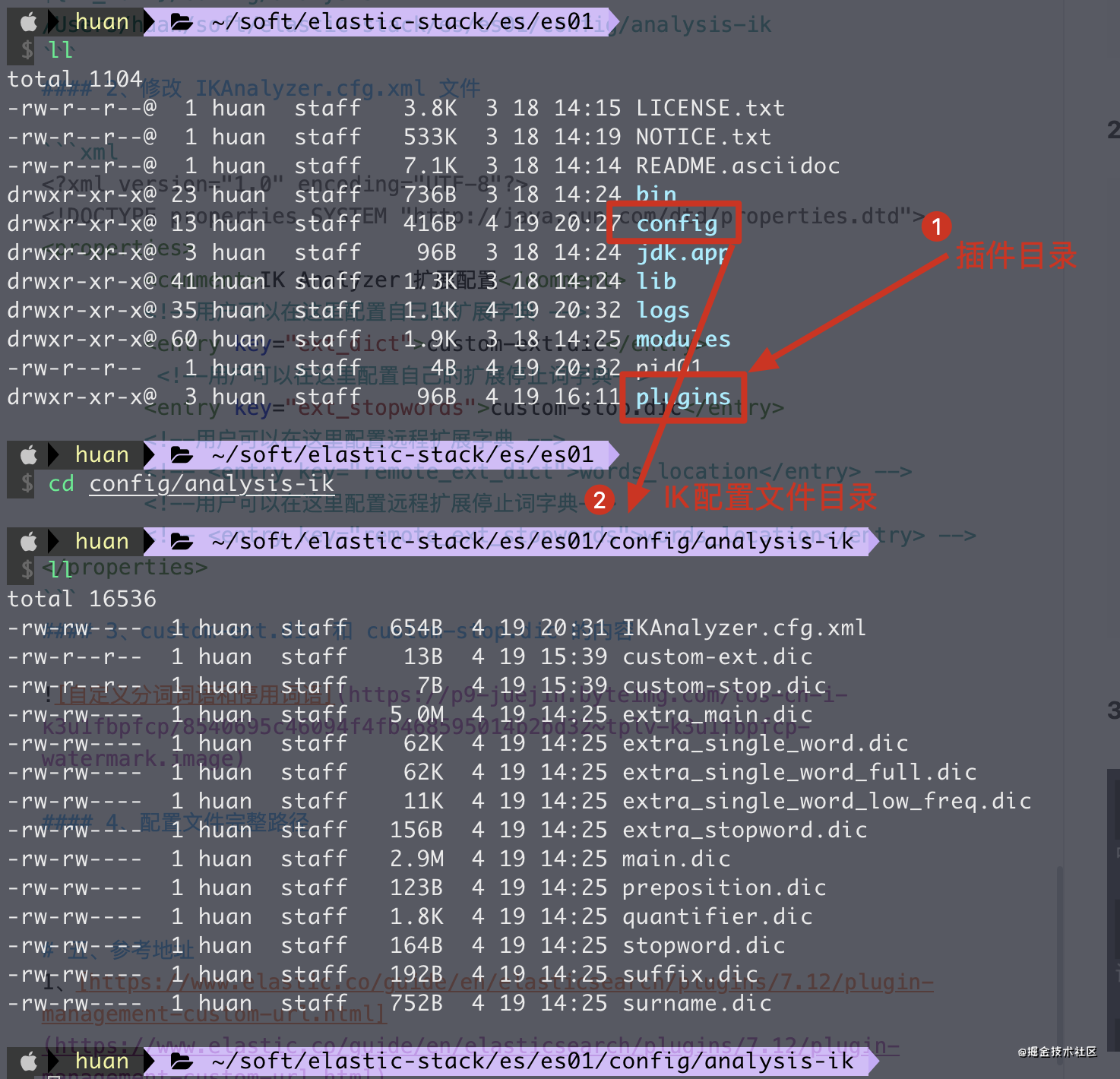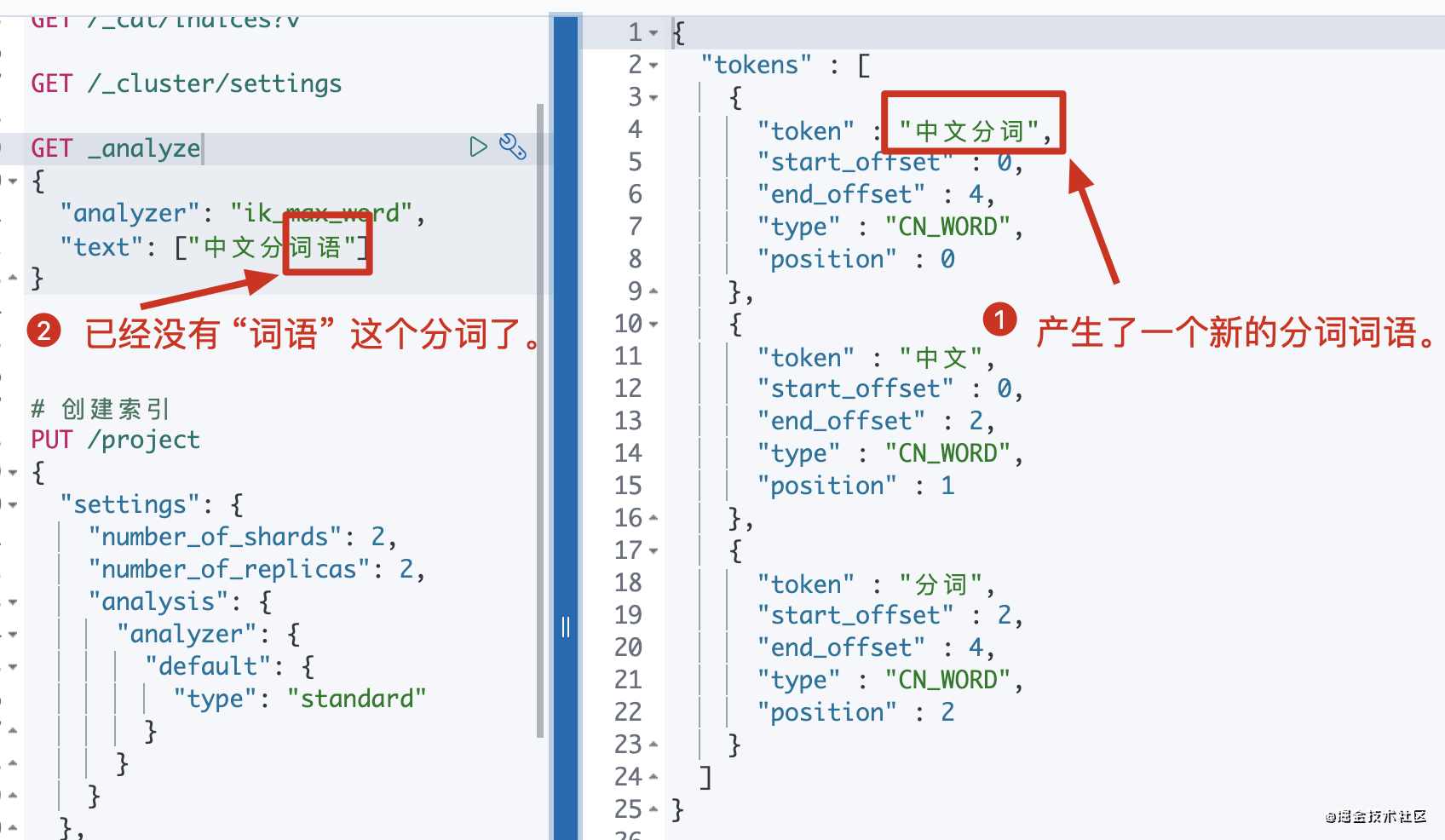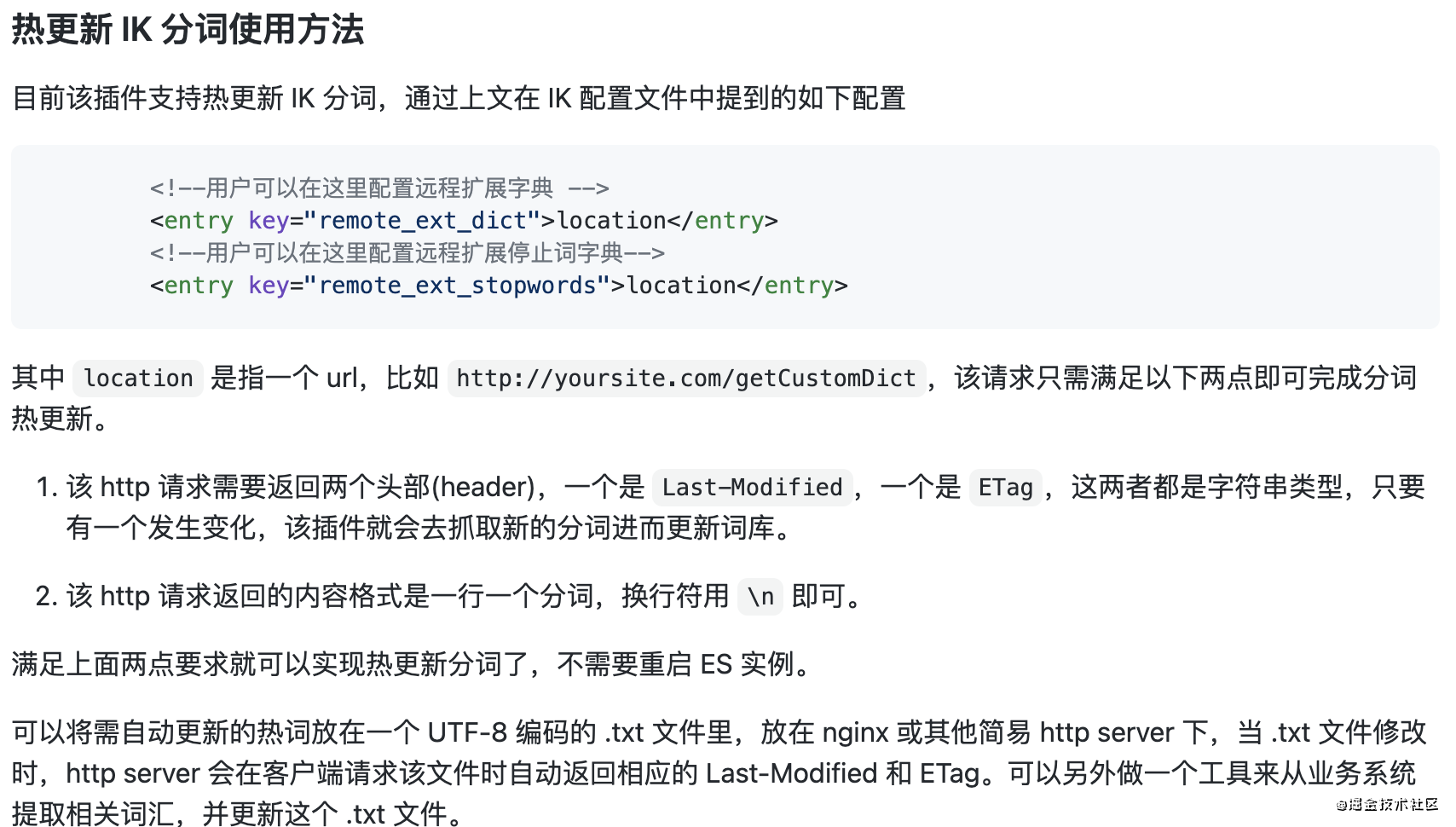这篇文章给大家介绍elasticsearch中如何使用ik中文分词器,内容非常详细,感兴趣的小伙伴们可以参考借鉴,希望对大家能有所帮助。
# 下载地址
https://github.com/medcl/elasticsearch-analysis-ik/releases直接从网络地址安装
cd /Users/huan/soft/elastic-stack/es/es02/bin
# 下载插件
./elasticsearch-plugin -v install https://github.com/medcl/elasticsearch-analysis-ik/releases/download/v7.12.0/elasticsearch-analysis-ik-7.12.0.zip
# 查看插件是否下载成功
./elasticsearch-plugin list从本地安装
cd /Users/huan/soft/elastic-stack/es/es02/bin
# 下载插件(file后面跟的是插件在本地的地址)
./elasticsearch-plugin install file:///path/to/plugin.zip注意:
如果本地插件的路径中存在空格,需要使用双引号包装起来。
# 查找es进程
jps -l | grep 'Elasticsearch'
# 杀掉es进程
kill pid
# 启动es
/Users/huan/soft/elastic-stack/es/es01/bin/elasticsearch -d -p pid01ik分词器提供了2种分词的模式
ik_max_word: 将需要分词的文本做最小粒度的拆分,尽量分更多的词。
ik_smart: 将需要分词的文本做最大粒度的拆分。
语句
GET _analyze
{
"analyzer": "default",
"text": ["中文分词语"]
}结果
{
"tokens" : [
{
"token" : "中",
"start_offset" : 0,
"end_offset" : 1,
"type" : "<ideographic>",
"position" : 0
},
{
"token" : "文",
"start_offset" : 1,
"end_offset" : 2,
"type" : "<ideographic>",
"position" : 1
},
{
"token" : "分",
"start_offset" : 2,
"end_offset" : 3,
"type" : "<ideographic>",
"position" : 2
},
{
"token" : "词",
"start_offset" : 3,
"end_offset" : 4,
"type" : "<ideographic>",
"position" : 3
},
{
"token" : "语",
"start_offset" : 4,
"end_offset" : 5,
"type" : "<ideographic>",
"position" : 4
}
]
}可以看到默认的分词器,对中文的分词完全无法达到我们中文的分词的效果。
语句
GET _analyze
{
"analyzer": "ik_max_word",
"text": ["中文分词语"]
}结果
{
"tokens" : [
{
"token" : "中文",
"start_offset" : 0,
"end_offset" : 2,
"type" : "CN_WORD",
"position" : 0
},
{
"token" : "分词",
"start_offset" : 2,
"end_offset" : 4,
"type" : "CN_WORD",
"position" : 1
},
{
"token" : "词语",
"start_offset" : 3,
"end_offset" : 5,
"type" : "CN_WORD",
"position" : 2
}
]
}可以看到基于ik分词可以达到我们需要的分词效果。
语句
GET _analyze
{
"analyzer": "ik_smart",
"text": ["中文分词语"]
}结果
{
"tokens" : [
{
"token" : "中文",
"start_offset" : 0,
"end_offset" : 2,
"type" : "CN_WORD",
"position" : 0
},
{
"token" : "分",
"start_offset" : 2,
"end_offset" : 3,
"type" : "CN_CHAR",
"position" : 1
},
{
"token" : "词语",
"start_offset" : 3,
"end_offset" : 5,
"type" : "CN_WORD",
"position" : 2
}
]
}${IK_HOME}/config/analysis-ik
/Users/huan/soft/elastic-stack/es/es01/config/analysis-ik<!--?xml version="1.0" encoding="UTF-8"?-->
<properties>
<comment>IK Analyzer 扩展配置</comment>
<!--用户可以在这里配置自己的扩展字典 -->
<entry key="ext_dict">custom-ext.dic</entry>
<!--用户可以在这里配置自己的扩展停止词字典-->
<entry key="ext_stopwords">custom-stop.dic</entry>
<!--用户可以在这里配置远程扩展字典 -->
<!-- <entry key="remote_ext_dict">words_location</entry> -->
<!--用户可以在这里配置远程扩展停止词字典-->
<!-- <entry key="remote_ext_stopwords">words_location</entry> -->
</properties>
注意:
1、自定义分词的文件必须是UTF-8的编码。


1、修改 IKAnalyzer.cfg.xml 文件,配置远程字典。
$ cat /Users/huan/soft/elastic-stack/es/es01/config/analysis-ik/IKAnalyzer.cfg.xml 11.87s 16.48G 2.68
<!--?xml version="1.0" encoding="UTF-8"?-->
<properties>
<comment>IK Analyzer 扩展配置</comment>
<!--用户可以在这里配置远程扩展字典 -->
<entry key="remote_ext_dict">http://localhost:8686/custom-ext.dic</entry>
<!--用户可以在这里配置远程扩展停止词字典-->
<entry key="remote_ext_stopwords"></entry>
</properties>注意:
1、此处的 custom-ext.dic 文件在下方将会配置到 nginx中,保证可以访问。
2、http 请求需要返回两个头部(header),一个是 Last-Modified,一个是 ETag,这两者都是字符串类型,只要有一个发生变化,该插件就会去抓取新的分词进而更新词库。
3、http 请求返回的内容格式是一行一个分词,换行符用 \n 即可。 4、在 nginx 的目录下放置一个 custom-ext.dic 文件

多次修改 custom-ext.dic 文件,可以看到分词的结果也会实时变化,如此就实现了分词的热更新。

关于elasticsearch中如何使用ik中文分词器就分享到这里了,希望以上内容可以对大家有一定的帮助,可以学到更多知识。如果觉得文章不错,可以把它分享出去让更多的人看到。
亿速云「云服务器」,即开即用、新一代英特尔至强铂金CPU、三副本存储NVMe SSD云盘,价格低至29元/月。点击查看>>
免责声明:本站发布的内容(图片、视频和文字)以原创、转载和分享为主,文章观点不代表本网站立场,如果涉及侵权请联系站长邮箱:is@yisu.com进行举报,并提供相关证据,一经查实,将立刻删除涉嫌侵权内容。
原文链接:https://my.oschina.net/huanoschina/blog/5025373